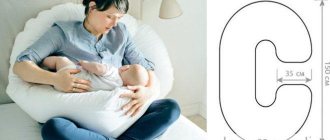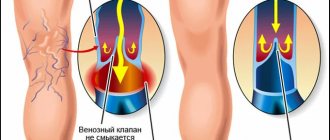Pregnancy, a happy period in a woman’s life, is at the same time a great stress for her body. All expectant mothers experience such unpleasant symptoms as frequent urination, constipation, swelling, back pain, etc. Their well-being is affected by exacerbations of existing diseases characteristic of pregnancy. Many medications are prohibited during pregnancy, so you have to turn to other methods. Special positional gymnastics, namely taking a knee-elbow position, can significantly alleviate the condition of the expectant mother.
Positional drainage during pregnancy
author: doctor Shevcherko N.G.
During pregnancy, at various stages, most women experience health problems. But this rarely leads to a complete contraindication for gymnastics and is usually temporary. Properly selected exercises will help ensure better blood supply to internal organs, mainly the kidneys, and relieve lower back pain. The knee-elbow position, for example, can be classified as positional drainage, as the production and elimination of urine with toxins is enhanced. In addition, by relieving pressure from the pelvic vessels, the outflow through the veins of the lower extremities improves, which helps treat swelling or pastiness of the legs.
First trimester
During the first trimester, the uterus grows moderately and does not yet put pressure on nearby organs. Therefore, you can quite actively engage in sports, except for jumping and risky movements. If you are concerned about early toxicosis, then moderate walking, full sleep, listening to pleasant music are recommended, exercises with static tension, and stretching are selected.
Second and third trimester
During the second and third trimester, the uterus already begins to put pressure on the abdominal region and the bifurcation of the aorta, kidneys, liver, and subsequently the diaphragm tightens. In this case, exercises are indicated in a sitting position and in a knee-elbow position.
Exercises
Start a set of exercises with rhythmic, calm and deep breathing to a good melody for a minute. You can walk in place, raising your knees not high. Sit on the mat and fold your legs in Indian style. Perform turns with the center of your body with bent arms several times. This will improve blood supply to the lungs and uterus. Connecting your feet, spread your knees to the sides and press your hands on them with elastic movements. This way you stretch some ligaments in preparation for childbirth. Exercises to tense the vaginal muscles (as if holding back urination) also stimulate blood circulation, are safe and doable at almost any time.
Take the knee-elbow position more often during the day. During gymnastics, use this starting position for the following exercises. Arch your back, then straighten it parallel to the floor, then bend as low as possible, and lift your head and shoulder girdle up. Then complicate it, perform movements with turns of the head and lateral bending of the body in the same direction.
For the same purposes, it is necessary to turn more often from one side to the other, and if possible, lie down. This relieves pressure from the ureters. There are exercises lying on your side with your legs raised to the side. In this case, the foot should be parallel to the floor, relaxed, and only the calf muscles and lateral thigh muscle groups are tensed. The free hand rests on the side of the floor, the stomach does not tense.
To improve blood flow, it is good to perform movements on the ball, during which you move your legs apart and relax your back muscles. Attend gymnastics for pregnant women with an instructor who will help you create a more specific and tailored lesson plan, taking into account your well-being and your treatment goals.
Positional therapy
The longer the pregnancy, the more actively the fetus grows. Accordingly, the uterus in which it is located increases, and the organs around it shift. The grown uterus puts too much pressure on them. This is not a pathology, but often causes discomfort. To reduce it, it is useful for the expectant mother to stand in a knee-elbow position. It is also called the drainage position or cat pose.
What are the benefits of positional therapy:
- the desired position is easy to take;
- no contraindications;
- helps with many problems;
- there is no significant physical activity or fatigue;
- there is no need to prepare specially in advance.
Positional therapy is prescribed in the third trimester if there are complaints about the functioning of internal organs. It is advisable for all mothers to perform a simple exercise already in the second trimester to avoid problems in the future.
In some cases, there are direct indications for positional therapy. Standing in the knee-elbow position (KEL) is mandatory for:
- getting rid of osteochondrosis due to excessive pressure on the musculoskeletal system; if you have lower back pain, then this is an indication for CLP;
- treatment of kidney problems - cystitis, pyelonephritis, etc.
Even if you have no direct indications for the cat pose, do not neglect this useful exercise. It will be an excellent prevention of many problems after childbirth.
Pregnant women in their last stages tend to feel worse due to an overly large belly. The uterus, which has significantly increased in size, puts great pressure on the internal organs. They move from their usual place, which leads to stagnation of blood. The knee-elbow position will lower the uterus down and slightly forward. The compressed organs will be able to return to their previous position and function normally.
Another unpleasant consequence is compression of the inferior vena cava and aorta. The vena cava is a soft-walled vessel located along the spine. If you lie on your back, you compress this vein. This is fraught with unpleasant health consequences. The outflow of blood to the heart will be difficult, varicose veins will develop, and the legs will become more tired.
Compression of the inferior vena cava is manifested by unpleasant symptoms, which will be eliminated by positional therapy:
- discomfort when lying on your back;
- feeling of lack of air;
- dizziness.
How else is CLP useful:
- will allow you to visit the toilet less often, which is a problem for pregnant women;
- will reduce the symptoms of gestosis in the second half of pregnancy;
- will lower blood pressure;
- relieves swelling;
- normalizes blood circulation;
- will relieve the musculoskeletal system - relieve pain in the back muscles.
The benefits of positional therapy are not only for the mother, but also for the child. His health will improve. What else can a “kitty” help with:
- calms the overly active child inside;
- saturate with oxygen;
- will help change the presentation of the fetus so that there are no indications for cesarean section - provided that it is performed regularly.
Despite all the benefits of positional therapy, keep in mind that it does not replace full treatment prescribed by a specialist. You use the “kitty” only as an auxiliary technique.
You can read reviews from moms about the benefits of positional therapy on BabyBlog
In the cat pose: why should pregnant women stand on all fours?
The position on all fours (positional drainage) is especially useful for women once their pregnancy has passed the 20-week mark. The growth of the uterus and accompanying changes in the body cause the expectant mother a number of inconveniences:
- Due to mechanical compression of the stomach, acidic contents are refluxed into the esophagus. The mucous membrane becomes irritated and heartburn occurs. Usually this process is prevented by the sphincter, which works on the principle of a valve, but under the influence of progesterone its tone decreases.
- The functioning of the intestine is disrupted, its peristalsis slows down, which leads to constipation, discomfort and bloating.
- Swelling occurs due to changes in water-salt metabolism and an increased amount of fluid.
- The rectum is pressed against the spine and pelvis, venous outflow worsens, which provokes the development of hemorrhoids.
- Due to deterioration of blood circulation due to the growth of the uterus, changes in hormonal balance and blood parameters, varicose veins worsen.
- Back pain appears, especially when walking for a long time. They arise due to a shift in the center of gravity and increased load on this section - the spine and back muscles take on part of the work due to stretching of the abdominal muscles. Increased weight also makes the situation worse. In the presence of diseases of the musculoskeletal system, their exacerbation occurs.
- The urge to urinate becomes more frequent due to compression of the bladder by the growing uterus.
- Disturbances occur in the cardiovascular system due to the increased load on it associated with increased blood flow, increased heart rate and increased body weight. Dizziness appears, blood pressure drops, and the pregnant woman experiences oxygen starvation.
- It becomes difficult to breathe (we recommend reading: why is it hard to breathe during pregnancy?). This symptom is felt by pregnant women in the last stages, since it is associated with the pressure of a highly elevated uterus on the diaphragm.
The knee-elbow position is useful for pathologies such as inflammation of the bladder and kidneys, circulatory disorders, uterine hypertonicity, gestosis and placental insufficiency. This position is especially recommended for breech presentation of the fetus - it helps the baby turn head down.
Elbow sarcoma
Why do pregnant women measure the height of the uterine fundus
? A malignant neoplasm of this location most often appears in the process of metastasis of other sarcomas. At the onset of the disease, pain gradually develops, and swelling can be visualized and palpated. Due to the fact that there is a powerful neurovascular bundle in the cubital region, the pain quickly acquires an acute, burning character. When the tendons and synovial membrane of the capsule are involved in the process, the motor function of the elbow joint is disrupted, then numbness of the limb and fingers increases when nerve fibers are damaged. Involvement of bone tissue in the process due to the aggressiveness of tumor growth leads to the frequent occurrence of pathological fractures.
The benefits of drainage pose for the expectant mother
The knee-elbow position during pregnancy has a positive effect on the well-being of the expectant mother. Positional gymnastics leads to a number of changes in the female body:
- the uterus drops slightly and moves forward, thereby easing the pressure on other organs;
- swelling is reduced, the risk of developing dropsy is reduced - a pathology in which fluid retention occurs in the body and extensive swelling occurs throughout the body;
- pressure on hemorrhoids is reduced;
- the load on the blood vessels decreases, the pulse calms down;
- the back muscles relax, the spine is unloaded;
- it becomes easier to breathe;
- the outflow of urine improves, which prevents cystitis and other urinary tract diseases;
- the pressure on the uterus is reduced, resulting in the release of tension in the uterine muscles;
- signs of gestosis are weakened, which manifest themselves in disturbances in the functioning of the digestive organs, respiratory and nervous systems;
- congestion in the kidneys goes away;
- pressure in blood vessels is normalized, which alleviates the symptoms of varicose veins;
- the load on the cervix is reduced, which is especially useful for isthmic-cervical insufficiency (ICI) - premature shortening of the organ (more details in the article: features of treatment of ICI during pregnancy).
How does this affect the fetus?
Correctly adopted knee-elbow position during pregnancy normalizes blood circulation in the uterine artery, which has a beneficial effect on the saturation of the child with oxygen and nutrients. Experts noted that if a woman systematically performs this exercise, the cardiac function of the fetus improves, and the expectant mother herself becomes able to breathe easier, and the functioning of her internal organs is restored.
This position can also affect the presentation of the fetus. If the baby is in the uterus in an incorrect transverse or breech presentation, which can negatively affect the birth process and become a direct indication for a cesarean section, the knee-elbow position regularly taken by the expectant mother can correct this situation, and the baby will turn head down.
Benefits of the knee-elbow position for the fetus
Regular use of CLP is beneficial not only for the expectant mother, but also for the baby. It allows you to normalize uterine blood flow, which promotes a greater supply of oxygen and nutrients to the fetus and improves its cardiac activity. When taking the knee-elbow position, the child begins to move more actively or calms down - this is how he reacts to changes in blood circulation.
The knee-elbow position is prescribed for breech presentation. Childbirth in this position of the fetus is considered pathological, since it can serve as a basis for a cesarean section and lead to a number of complications.
If there are pathologies
The knee-elbow position not only alleviates the condition of a pregnant woman, but also helps to cope with many ailments, including:
- isthmic-cervical insufficiency;
- malposition;
- uterine tone.
Some women are diagnosed with isthmic-cervical insufficiency (ICI) after 20 weeks. Typically, pathology is detected on ultrasound and implies that the woman has a short cervix. What does this mean for the expectant mother?
Premature birth. The cat pose helps with ICN. In this position, the load is removed from the cervix. In some cases, it can even stretch out. Obstetricians prescribe the same position when detecting a breech presentation of the fetus.
This is very important, because in this position a normal birth is almost impossible. Therefore, obstetricians almost always prescribe a caesarean section.
Otherwise, complications may arise for the child. In order for the child to roll over correctly, it is important to regularly perform this exercise on only one side - right or left.
If you find it difficult, ask your family to help you with this. During this event, blood actively flows to the fetus, and its cardiac activity improves. The child begins to move actively or, on the contrary, calms down.
In any case, this is his reaction to positive changes in the environment. The pose is also useful for uterine tone. Do you remember that in this position all muscles and ligaments relax? So get on all fours more often.
How to stand in the CLP correctly, how often and for how long?
It’s clear why doctors recommend pregnant women do the knee-elbow position. Now let’s figure out how to perform the exercise so that the knee-elbow pose brings maximum benefit (this is clearly demonstrated in the video for the article). To perform the exercise correctly you must:
- Smoothly lower one and then the other knee to the floor. Spread your knees hip-width apart.
- Lean your body forward and lean on your wrists. They should be in line with your shoulders, so that your arms are perpendicular to the floor.
- Bend your elbows, transferring your body weight to them. The shoulders should be below the level of the pelvis, the hips should be perpendicular to the floor (the correct pose is in the photo). You can put a pillow under your head.
The pose must be maintained for 5–15 minutes. Gradually the duration can be increased to half an hour. It is recommended to perform the exercise at least 3 times a day, optimally 5–6. If the expectant mother feels very relieved, then she can stand in the CLP more often.
For comfort, it is recommended to use a gymnastic mat or place pillows under your knees and chest. Being in the position should not cause any discomfort. A feeling of discomfort indicates that the exercise is being performed incorrectly. You need to take the knee-elbow medicine regularly, only then will it bring maximum benefit.
Tips and tricks for doing the exercise
First, about the general rule. When performing any back exercise, the actions should be smooth. Everything is done at a slow pace. No jerking! The correct position in the exercise is important.
The starting position implies a clear position of the knees parallel to the pelvis, and the palms parallel to the shoulders. The abdominal muscles should be tense throughout the exercise.
- To better arch your back, lift your head as high as possible.
- As you arch and arch your spine, hold the position for about eight to ten seconds.
- When tilting your head down, try to point it as close to your elbows as possible.
- It is best to perform the “Cat” exercise on an empty stomach. You can do it every morning. If you train in the evenings, then wait a few hours after eating and then start exercising.
Does the method have any contraindications?
If you perform knee-elbow gymnastics correctly, then it has no absolute contraindications. If you experience any discomfort, dizziness or headache during exercise, you should immediately change your position. To avoid discomfort, it is necessary to increase the load gradually. You should start by maintaining the position for 5 minutes, then you should gradually increase the duration to 15-30 minutes.
Limitations to the exercise are spinal injuries that do not allow flexion and extension of the back. Care must also be taken in case of neck injuries - do not include it in the process, leaving it in line with the spine. If you feel severe discomfort, you should consult a doctor.
Basic tips for pregnant women practicing yoga
You can start practicing yoga from the first months of your pregnancy.
It is extremely important to consider that before starting classes, you need to meet with a doctor and during a consultation, understand whether there are any contraindications for you personally. Not all asanas are suitable for the period of pregnancy
It is recommended to use certain exercises that minimize the likelihood of harm to the mother or baby.
Quite often, various exercises for twisting and bending are removed from a lying position. It is also not recommended to bend forward too much.
During classes, you need to listen to yourself - there should be no discomfort, much less pain. If these sensations appear, stop exercising immediately and rest. Take rest between asanas to avoid tension in the body.
During the first 12-14 weeks of pregnancy, practice yoga with extreme caution.
What are the benefits of the knee-elbow position during pregnancy?
Due to the rapid growth of the uterus and displacement of internal organs, discomfort and pain may occur associated with bloating, constipation, frequent urination, swelling and other problems. To cope with them, experts suggest taking the knee-elbow position during pregnancy - a position that helps to quickly eliminate congestion in the abdominal organs. Typically, this position is recommended for those expectant mothers whose pregnancy exceeds the 20 week mark. But it will be useful in the early stages.
Helping to keep the body in good shape, improving blood circulation in the pelvis, stimulating the work of muscles and ligaments, the knee-elbow position prepares a woman for the upcoming birth throughout pregnancy.
Some aspects of normal pregnancy
Many pregnant women ask the question: is it necessary to help the body cope with bearing a child? Isn't this a direct contradiction to the theory of natural selection? Of course, pregnancy is a physiological state, and the body of a healthy, strong woman is able to bear and give birth to a child without any external intervention. But the statistics are inexorable: not many expectant mothers can be called absolutely healthy. In modern conditions, not all women are able to safely endure pregnancy and childbirth. Is it worth the risk if you can gently and unobtrusively help the body cope with such a serious load?
During pregnancy, everyone, even completely healthy women, experiences some changes in their bodies. The baby is growing, the uterus is stretching, and every week it needs more and more space in the pelvic cavity, and then in the abdominal cavity. Under pressure from the uterus, the organs of the digestive tract and the diaphragm are displaced. All these changes are not pathological, but they can cause significant discomfort and even exacerbation of some chronic diseases.
The growing uterus, pressing on the abdominal organs, leads to disruption of blood flow in them. The function of the stomach suffers, the digestion of food in the intestines slows down, and stagnation processes develop. The outflow of urine from the kidneys through the ureters is disrupted. The load on the spinal column and sacroiliac joint increases. Due to pressure on the aorta and inferior vena cava, the functioning of the cardiovascular system is disrupted. All these phenomena cannot but affect the well-being of a pregnant woman, as well as the development of her baby from the moment of conception to childbirth.
Is it possible to help the body cope with increased stress? Of course, if you follow a daily routine, adhere to a balanced diet and keep your body in good shape. One of the methods for regulating the work of internal organs, muscles and ligaments is therapeutic exercises, and in particular the knee-elbow position
How does it work and why is it so important to do gymnastics during pregnancy?
Why is the knee-elbow position needed during pregnancy?
This position is recommended for expectant mothers suffering from edema, cystitis, pyelonephritis and other disorders. In the pose on all fours, there is no excess pressure on the kidneys and bladder, urine begins to be excreted better, blood circulation in all pelvic organs improves, which reduces the risk of inflammation and congestion.
Doctors also advise resorting to this exercise to prevent gestosis, which is what toxicosis is called in the second half of pregnancy. This condition is preceded by metabolic disorders in the expectant mother, problems with the kidneys and liver, increased blood pressure and other unpleasant symptoms. The knee-elbow position normalizes the condition of the main internal organs and systems, preventing the development of this pathology.
It is recommended that all women take this position in the second half of pregnancy, even in the absence of any complaints. In this situation, the pose will be a preventive measure that will help prevent the possible development of complications and discomfort caused by excess pressure from the constantly enlarging uterus on nearby organs. The knee-elbow position also removes excess stress from the muscles and ligaments, making the expectant mother feel better in the later stages of pregnancy.
Sleepless nights of the 3rd trimester
Starting from the 20th week, the belly increases rapidly. By the beginning of the 3rd trimester, he no longer allows the woman to lead her usual lifestyle. What sleeping position is suitable for a pregnant woman during this difficult period?
The inferior vena cava is a large vein that opens into the right atrium and collects blood from the lower parts of the body. Consequently, it is she who ensures the outflow of blood from the legs and pelvis. When sleeping on the right side or on the back, the vein can be compressed by the enlarged uterus.
We reiterate that there is little research in the literature about the feelings of patients, their families and health care team members regarding the pregnancy-cancer association.
The focus of research is on physical care, but patients should also receive psychological, social, educational and legal care, including for the well-being of themselves and their families
In view of the above, we propose to explore the emotional impact of cancer on pregnancy, the emotional dynamics and motivation of these patients to become pregnant, and the importance of psychological support in prenatal and postnatal care.
In addition to the fact that in the late stages of pregnancy it is difficult to take a truly comfortable position, a woman’s sleep becomes restless and anxious.
Indications and contraindications
The knee-elbow position is indicated for the following conditions:
- exacerbation of osteochondrosis - restricted movements, pain in the lumbar region;
- impaired urine outflow - edema, cystitis, pyelonephritis, etc.;
- disorders in the functioning of the digestive tract - flatulence, constipation, etc.;
- varicose veins of the extremities and rectum;
- development of gestosis;
- disorders of the uteroplacental circulation, pathologies of the placenta;
- disorders of the heart and blood vessels.
This pose has virtually no contraindications, so with its help every woman can improve her well-being without taking any medications.
Benefits during pregnancy
So, what are the advantages of the knee-elbow position practiced by expectant mothers during pregnancy:
- excellent prevention of toxicosis, starting from the 2nd trimester, as it helps prevent congestion in the kidneys and improve urine flow;
- restoration of circulatory processes in the renal system, against the background of which the risk of arterial hypertension and surges in blood pressure, which are fraught with gestosis, is reduced;
- combating swelling, preventing the development of dropsy;
- timely emptying of the bladder as an excellent prevention of cystitis and other pathologies of the urinary system;
- normalization of the condition of varicose veins, which can bother a woman on the legs, pelvic area and rectum, due to improved blood circulation in the vessels;
- Relieving stress from the spine, ligaments and muscles.
What types of massage are allowed during pregnancy?
An important point in using massage while expecting a child is a mandatory consultation with a gynecologist and therapist.
For the procedure to be beneficial, choose an experienced, trusted specialist, remember that here we are talking about the health of two people. When choosing a massage therapist, also pay attention to the emotional side; you should feel comfortable with this person so that you can calmly relax and receive only positive emotions from the process. It is advisable to sign up for the procedure at a time when you have a free day and there is not much strain on the muscles.
You can make massage movements in the area:
- heads;
- shoulder girdle;
- backs;
- arms and legs.
What types of massage are allowed?:
- Classic back massage . It is especially important during the 2nd and 3rd trimester, when the load on the spine increases sharply.
- Neck and collar massage . This type can be used at any period of pregnancy to relieve fatigue and relax the muscles of the spinal column.
- Head massage . Thanks to pleasant, soft movements in the head area, you can relieve pain, stress, and increase emotional stability, which is no less important during the perinatal period.
- Lymphatic drainage massage of the arms and legs improves the movement of lymph and relieves swelling.
It is not recommended to carry out the procedure in the abdomen and chest area.
Many women worry about their appearance, but you can remain beautiful even while expecting a child. You can use facial massage for this. This procedure helps:
- smoothing out small facial wrinkles;
- improving skin tone;
- maintains freshness and pleasant complexion;
- removes puffiness and bags under the eyes;
- helps in the fight against skin rashes;
- increases blood flow and lymph movement.
Pregnant women can have a sculptural and supportive facial massage . It can also be done at home on your own. During the perinatal period, there are no restrictions on facial massage techniques; you can use any.
Execution technique
The knee-elbow pose will be useful for the expectant mother if you perform it not only according to all the rules, but also systematically.
How to correctly take the knee-elbow position during pregnancy:
- Place your knees on the floor.
- Transfer your body weight to your forearms.
- Bend your elbows, while your stomach should hang down.
- It is advisable to lower your shoulders and head below the level of your buttocks - in this case, the effectiveness of the exercise will be higher.
- Place your forehead on a previously prepared pillow to add a little comfort.
The surface for performing the exercise should be as stable and hard as possible - ideally doing this on the floor.
You can get up in this position every morning and evening. If desired, you can perform the exercise more often. You need to stay in this position for at least 30 minutes, but it is important to monitor your well-being.
Correctly performed by the expectant mother, the knee-elbow position in the second half of pregnancy can improve the condition of internal organs, protect them from congestion, circulatory disorders, which is most beneficial for the kidneys, bladder, intestines, muscles, and helps relieve discomfort and pain. The main thing is to do this exercise regularly.
Author: Olga Rogozhkina, doctor, especially for Mama66.ru
And now about favorable poses!
Their list is much wider:
- Traditional missionary position (doctors also additionally advise, after the act, to place a pillow or any other object under the woman’s hips that helps raise the pelvis);
- Doggy style (this position promotes very deep penetration, which significantly increases the couple’s chances of an early pregnancy);
- Pose “on the side” (in this position the girl’s hips are at the desired angle, and after the end of the act it is necessary to lie on the same side for some time and not move);
- A slightly modified missionary position - the girl’s legs should be raised above her head, and for convenience they can be placed on the partner’s shoulders (again, the pelvis in this case takes a higher position to increase the depth of penetration).
In addition, many couples know some other secrets that contribute to a speedy conception. So, for example, a good solution immediately after sexual intercourse is considered to be the familiar “birch tree” exercise, which is familiar to almost everyone, where you need to raise your legs and pelvis high.
Doctors have not yet found confirmation or refutation of this theory, however, they say that there is a reasonable grain in this, because in this position, sperm are much easier and faster able to penetrate into the uterine cavity.
Doctors also talk about the importance of mutual orgasm. Indeed, it is important that the woman reaches the maximum peak of pleasure
During uterine contractions, it is easiest for sperm to reach their target.
But this method is not universal, since it only works in the case of simultaneous orgasm, and this, again, according to doctors, does not happen very often.
Knee-elbow pose for pregnant women
How is the knee-elbow pose useful and how to perform it?
When a woman is carrying a baby in her womb, she is constantly under the control of doctors. Gynecologists and obstetricians, monitoring the course of pregnancy, can prescribe the patient not only medications, but also instructions regarding the necessary positions of the body. For example, recently pregnant women are increasingly faced with the concept of the knee-elbow position during pregnancy. According to experts, this position is extremely useful for expectant mothers. What exactly is its benefit, and how to position the body correctly, further.
The position, referred to in obstetrics as the knee-elbow position, is one of the available methods from the arsenal of therapeutic agents designed to alleviate and improve the condition of pregnancy. This method is completely safe.
Indications for use
The knee-elbow position of the torso is recommended for pregnant patients, as a rule, after the 20th week of pregnancy. This position, which is demonstrated in the photo and video below, can alleviate a woman’s condition if pregnancy is not proceeding according to norms or if any disorders are observed. In addition, it helps the baby to take the correct position in terms of childbirth.
Considering that the body of the expectant mother experiences changes throughout the entire 9 months of pregnancy, we can assume a change in the functioning of vital systems. By influencing nearby organs, the uterus and the fetus in it cause certain disorders that entail unpleasant sensations and even adverse consequences.
For example, the bladder is unable to function fully, causing a frequent urge to defecate, and sometimes involuntary urination. In some cases, improper functioning of the bladder provokes fluid retention in the body, which can lead to swelling and, as a result, the development of prerequisites for gestosis.
In addition, the intestines are pinched, some vessels of the circulatory system are pinched, and the musculoskeletal system is “loaded.”
Another situation in which it is recommended for pregnant women to take the knee-elbow position is fetal presentation (breech, oblique, transverse).
The knee-elbow position allows you to reduce discomfort and stress on internal systems and organs, and also increases the likelihood that if the position is incorrect, the fetus will be able to roll over before birth.
If you do this pose correctly and regularly (as described in the video below), you can create conditions under which the muscles of the uterus will be relaxed. This will allow the uterus to be at rest more often, which will have a beneficial effect on pregnancy.
Doctors' recommendations
Why doctors recommend the knee-elbow position, we figured it out. Now we should explain how to properly begin performing a special exercise.
Obstetricians advise taking the knee-elbow position starting from the 20th week. This specific relaxation exercise should be done several times during the day. Taking this position is not only useful, but also safe, so the number of repetitions can be determined by the pregnant woman herself.
To take the knee-elbow position does not require excessive effort.
The step-by-step technique for performing the exercise, which is taught in the video instructions, is as follows: - Get on all fours, and then lower yourself onto your elbows; - Lower your shoulders and head so that your pelvis is above their level; - Focus on your own feelings so that you do not experience discomfort, pain, or dizziness.
To make it comfortable to stay in this position for 15 minutes, you can use two pillows, placing one under your knees and the other between your arms under your chest, as shown in the video instructions:
').width($(this).width()).height($(this).height()))»>
You will be able to notice the beneficial effect of the exercise on the first day. As a result of a 15-minute stay in the knee-elbow position, the pregnant woman notes unloading of the lumbar region, relieving tension in the lower abdomen, eliminating the tone of the uterus, and improving overall well-being.
For the baby in the womb, the knee-elbow position is also beneficial. During this exercise, the oxygen supply to the fetus improves, which, in turn, affects the heart rate and development of the baby as a whole.
About positions for conceiving a child of a certain gender
In official medicine, there is no confirmed data on the connection between the position at conception and the gender of the unborn child. All data on this matter rather relates to folk signs. However, sometimes practice confirms the validity of folk customs.
Conception of a boy
Let's look at what recommendations exist for conceiving a boy:
To conceive an heir, the recommended position is on all fours or on the side, with the man on top. It may also be located posteriorly if the uterus is curved. Therefore, for the best effect, it is recommended to use positions where the sperm penetrates as deeply as possible. It is recommended to have sex exactly on the day of ovulation itself (Hutzold method), allowing sperm with male chromosomes to quickly reach the egg. Such sperm are considered more mobile, but less tenacious. Therefore, the vaginal environment should be as alkaline as possible. It is also possible to conceive a boy immediately after ovulation (within 1-2 days). To get pregnant with a boy, you need to have regular sex life, without taking long breaks between sex and without using abstinence. On days when conception with a boy is unlikely, it is better to use a condom. A man should not warm up before sexual intercourse, otherwise the male chromosomes will not survive after that. It is desirable for the couple to experience a joint orgasm
At the same time, it is important for a woman to experience orgasm, since this releases a secret for preserving male chromosomes. This can significantly increase the chances of conceiving a male baby.
Sources
- https://budumamoi.com/techenie-beremennosti/kolenno-loktevoe-polozhenie-pri-beremennosti-kak-pravilno-delat.html
- https://nektarin.su/dlya-mam/beremennost/v-kakoj-poze-mozhno-bystro-zaberemenet.html
- https://JdemBaby.com/planning/zachatie/luchshie-pozy-dlya-zachatiya-rebenka.html
- https://BornInVitro.ru/planirovanie-beremennosti/luchshie-pozy-dlya-zachatiya/
Benefits of the position for the fetus
In addition to the benefits for the mother, this position is also convenient for the child. This way the child feels better. Some mothers note that active children, who often push hard, become quiet in this position. Relieving the tone of the uterus also has a beneficial effect on pregnancy.
Because the vena cava is freed, the baby receives a larger volume of oxygen-rich blood.
In addition, the knee-elbow position helps the baby take the correct position before childbirth. In some situations, thanks to this position, you can help the child change presentation if it is transverse or pelvic.
Impact on the child
The benefits of the knee-elbow pose for pregnant women are clear. What happens to the fetus at this time? The condition of the child during all 9 months is closely related to the well-being of the mother. If these activities make the work of her organs easier for her, then the baby will be more comfortable in the stomach.
Thanks to this healing technique, blood circulation in the arteries of the uterus is activated, which means the baby will receive more oxygen.
In addition, obstetricians and gynecologists are confident that this stand helps the fetus take the correct position in the womb. It is also recommended before caesarean section.
Also, the position on your knees and elbows helps the baby turn head down before birth and prepare for birth.
How to do the knee-elbow exercise correctly
First of all, you need to prepare soft pillows, a rug or a ball. Slowly, leaning on something if necessary, lower your knees onto the pillow. Bend your elbows and bend over so that your shoulders are lower than your lower back. Shift your weight to your elbows - this will allow you to relax your back. There is no need to try to keep it straight, otherwise the meaning of the procedure will be lost. You can rest your elbows on a pad or on a large ball. You can also put a pillow under your head. The main thing is to be comfortable.
This gymnastic pose requires a large, stable surface, ideally a floor covered with something soft. It is important that it is not cold.
Doctors recommend holding this position for 15-30 minutes, but everything is purely individual. The main thing is that the woman feels good. Perhaps someone will decide to get into this position based on sensations, for example, if they feel back pain or tension in the uterus. But in order to steadily improve your condition, you need to take this position systematically, preferably 2-3 times a day. Typically, improvement can be felt within the first 10 minutes.
What interferes with pregnancy
After sexual intercourse, you should not jump out of bed, because sperm leaks out and it is more difficult for sperm to reach their target. Lie in bed for a while, think about pleasant things, dream and relax for at least 15 minutes. Do not try to relax with alcohol before sex, in such a situation it is your enemy, since it leads to a deterioration in the quality characteristics of the seminal fluid, which can lead to the birth of a baby with abnormalities.
When choosing which position is best to get pregnant, do not forget about regularity. Sex is regular, but not frequent. Plan to have sexual intercourse no more than once a day, otherwise the sperm will be weak and will not cope with fertilization. Don’t worry about trying to get pregnant with a baby of a certain gender; such methods usually don’t work.
Who needs to do it and when?
Any pregnancy starting from 28 weeks is an indication for the knee-elbow position. You can start earlier - it won’t make things worse. Even if the pregnancy proceeds easily and without incident, this position will help you experience even more joy from the pregnant state, as it will serve as a preventive measure and prevent possible problems.
If the doctor recommended this position for some pathologies, for example, hypertonicity of the uterus or if the child is particularly active in the womb, you should not be afraid to follow such recommendations. This simple procedure has no direct contraindications, but it can really help. Of course, you need to listen to your body - joint pain or dizziness can be a signal that you might need to change something: don’t lower your head so low or put something softer under your elbows and knees.
So, the knee-elbow position during pregnancy is an opportunity in a simple way to improve your well-being and take care of the baby’s health. This way you can improve the flow of urine and normalize blood circulation in the lower extremities, relieve pressure from the internal organs so that they can function well and allow the back muscles to rest, and the mother can enjoy her wonderful position while waiting for a miracle.
What kind of pathology
According to the WHO definition, synovial sarcoma is a mesenchymal spindle cell malignancy that may have a tissue component with epithelial differentiation and the presence of a specific chromosomal translocation. This term first appeared back in 1895: it was introduced by the German doctor G. Simon. Since then, several hundred cases have been described, which have brought synovial sarcoma into an independent nosology.
Despite its name, the origin of malignant synovioma from elements of the synovial membrane has not been confirmed. It is believed that this tumor is a variant of primary carcinosarcoma. Some scientists believe that it comes from immature mesenchymal cells. There is even evidence that the tumor may be of neuroectodermal origin (due to the similarity in the expression of many genes of synovial sarcoma with a malignant tumor originating from the sheaths of nerve fibers). Be that as it may, research into the origin of the cells of this neoplasm continues, and in the WHO classification it is in the section of tumors with unclear tissue differentiation.









